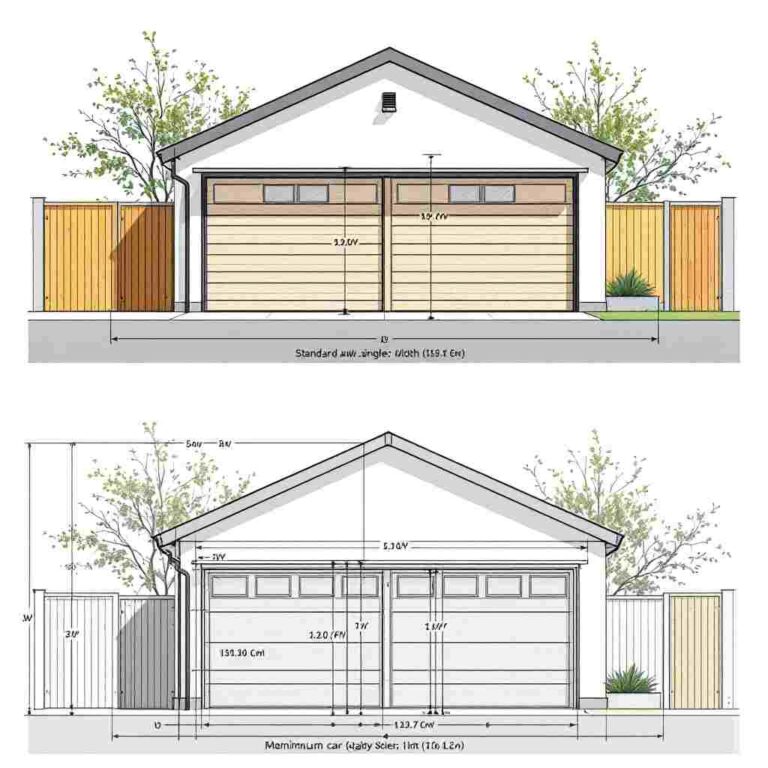Adding a garage to your house not only provides additional storage and parking space but also increases the overall value of your property. However, before diving into construction, you may have wondered: how big can a house garage be without planning permission? This question is crucial, as understanding planning regulations can save you time, money, and potential legal troubles.
Understanding Planning Permission and Permitted Development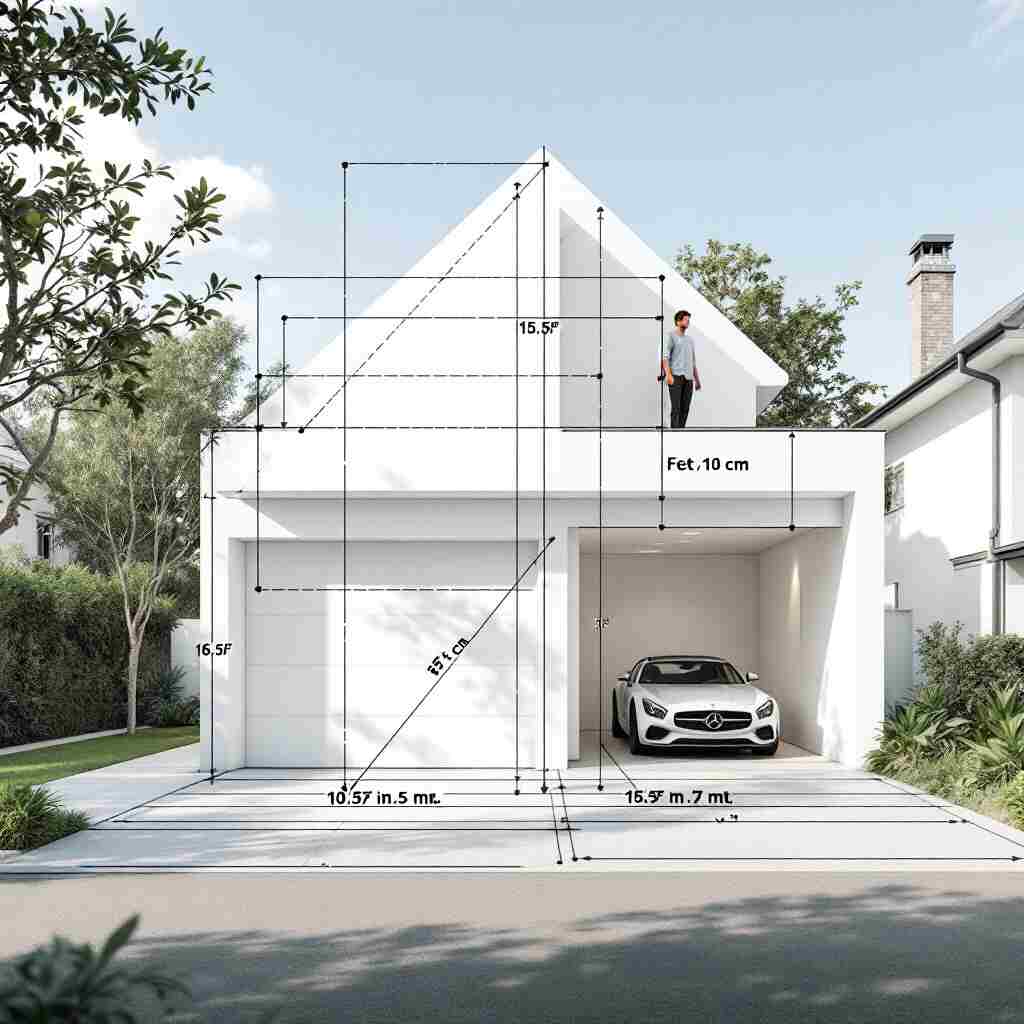
What is Planning Permission?
Planning permission is a legal requirement for certain types of construction or modifications to a property. It is granted by local authorities to ensure that building projects align with zoning laws, environmental considerations, and public safety standards.
However, not all projects require planning permission. The UK has established Permitted Development Rights, allowing homeowners to make certain property changes without needing formal approval. These rights simplify minor projects, such as building small garages, conservatories, or garden sheds.
Why Do Garages Often Fall Under Permitted Development?
Garages are frequently covered under permitted development because they are considered minor additions, provided they meet specific criteria. This approach streamlines the process for homeowners, allowing them to improve their properties without lengthy approval processes.
Benefits of Building Within Permitted Development
- Faster Process: No waiting for planning approval.
- Lower Costs: No fees for a planning application.
- Less Paperwork: Simplified requirements reduce administrative burdens.
Adhering to the permitted development rules can avoid unnecessary delays and expenses. Let’s dive into how big your garage can be without requiring planning permission.
Key Criteria: How Big Can a House Garage Be Without Planning Permission?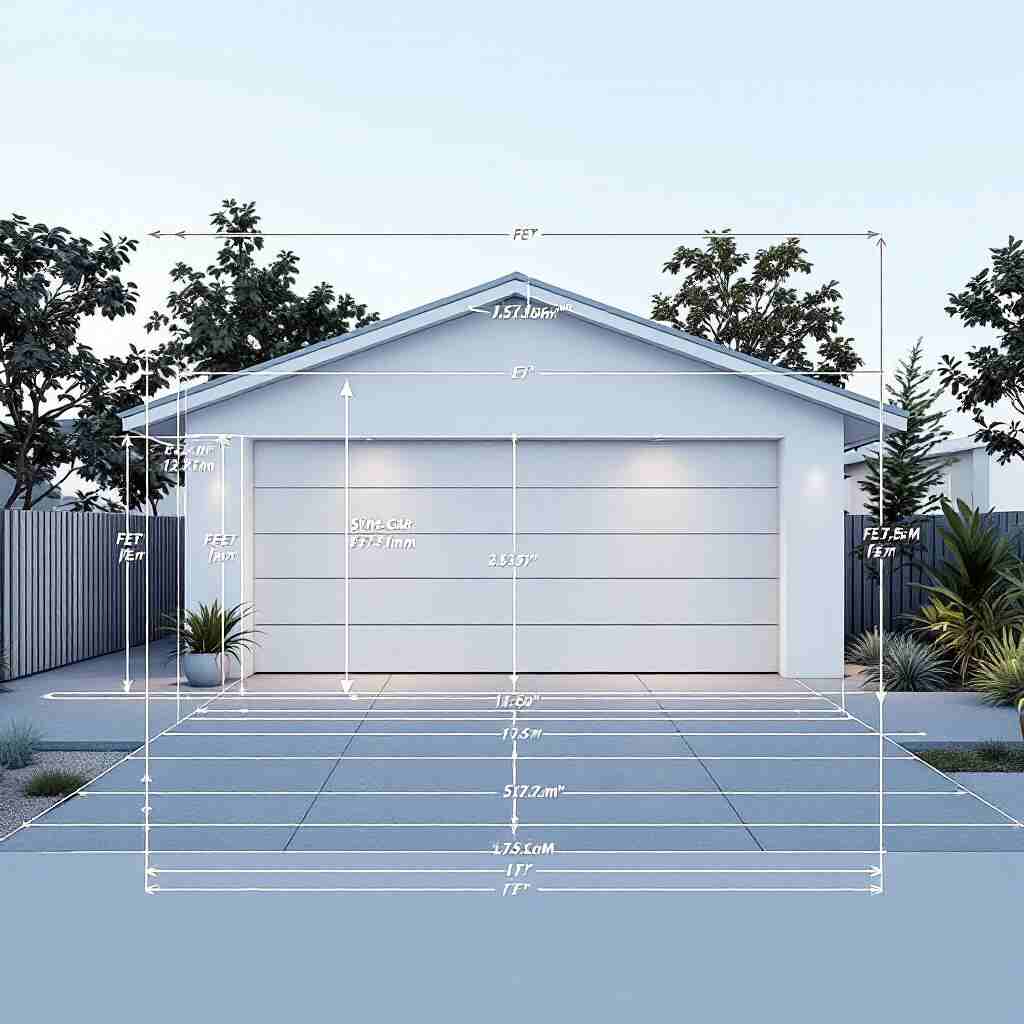
When building a garage under permitted development, several restrictions must be followed. These include height, location, land coverage, and proximity to boundaries.
Height Restrictions
The height of your garage is a critical factor in determining whether it qualifies under permitted development. The rules are as follows:
- Single-storey only: Multi-storey garages require planning permission.
- Maximum height:
- 4 metres for a dual-pitched roof (e.g., gable roofs).
- 3 metres for other roof types (e.g., flat or mono-pitched roofs).
- Boundary restrictions: If your garage is within 2 metres of the property boundary, the maximum height is limited to 2.5 metres.
These height restrictions prevent garages from overshadowing neighbouring properties or creating visual obstructions.
Location on the Plot
The location of your garage on your property plays a significant role in whether planning permission is required.
- The garage must not be in front of the principal elevation of the house (i.e., the front-facing side of the property).
- In some protected areas, garages may also be restricted from being built on the side of the house.
Land Coverage
Permitted development rules state that the garage and any other outbuildings must not cover more than 50% of the land surrounding the original house as it stood on 1 July 1948.
What is the “Original House”?
The “original house” refers to the property as it was first built or stood on 1 July 1948. Any extensions or additions made after this date are not included in the calculation of available land for permitted development.
Floor Area Guidelines
While planning permission focuses on height and land coverage, it’s worth noting that building regulations may apply to the internal floor area of your garage:
- Detached garages under 15 square metres or attached garages under 30 square metres generally do not require building regulation approval, provided they are built with non-combustible materials.
Special Considerations for Boundaries
If your planned garage is within 2 metres of any boundary, the height must not exceed 2.5 metres.
What Counts as a Boundary?
A boundary is the legal dividing line between your property and your neighbour’s. This includes fences, walls, and hedges. Staying within these height limits ensures minimal impact on your neighbours.
Exceptions and When Planning Permission is Required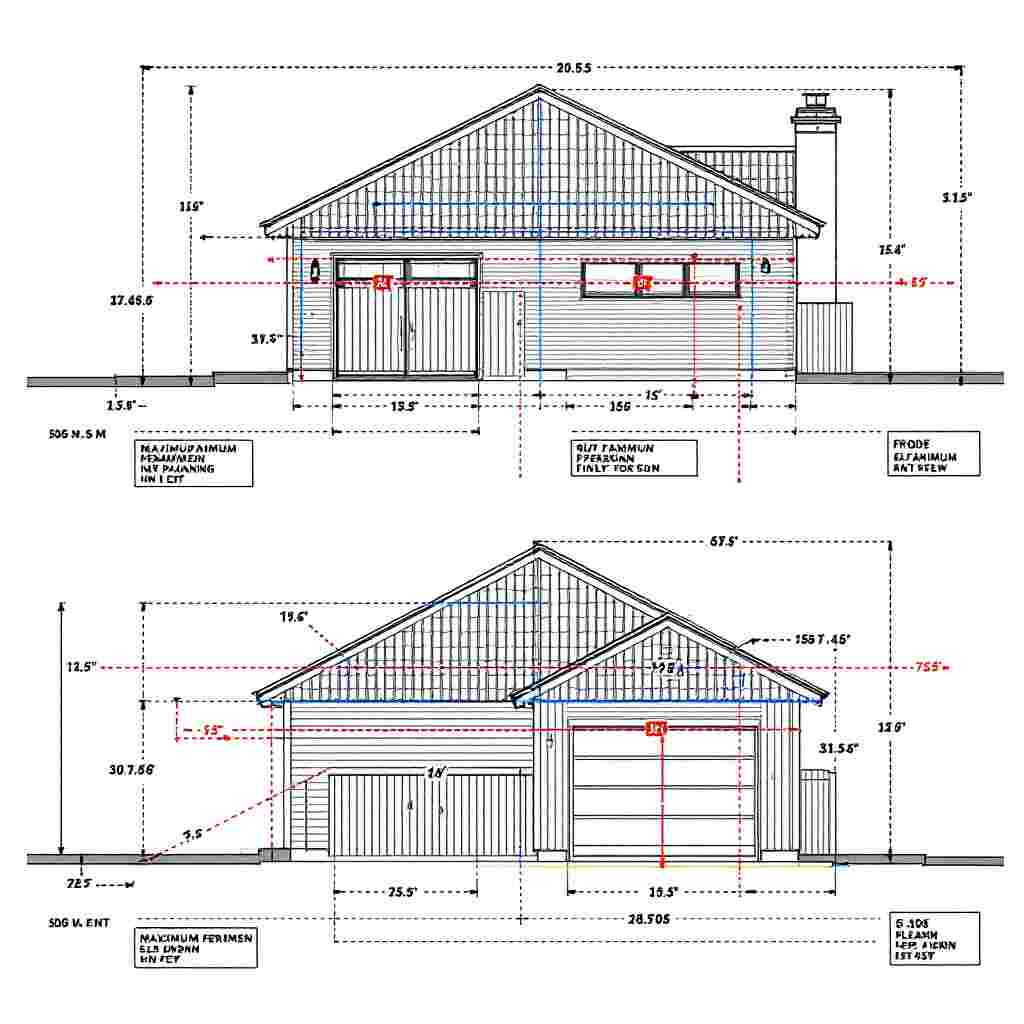
While garages often fall under permitted development, there are exceptions where planning permission may be necessary.
Protected and Designated Areas
Additional restrictions apply if your property is located in a conservation area, National Park, Area of Outstanding Natural Beauty, or World Heritage Site. For example:
- Garages may not be permitted on the side or front of the house.
- Structures more than 20 metres from the house require planning permission.
Listed Buildings and Article 4 Directions
If your house is a listed building or falls under an Article 4 Direction, you’ll need planning permission for almost any alteration, including adding a garage. Article 4 removes permitted development rights to protect the character of specific areas.
When Garage Design Exceeds Permitted Development
Planning permission is required if:
- The garage exceeds height or land coverage limits.
- You’re building a multi-storey garage or adding living space above it.
Step-by-Step Guide: Planning Your Garage Addition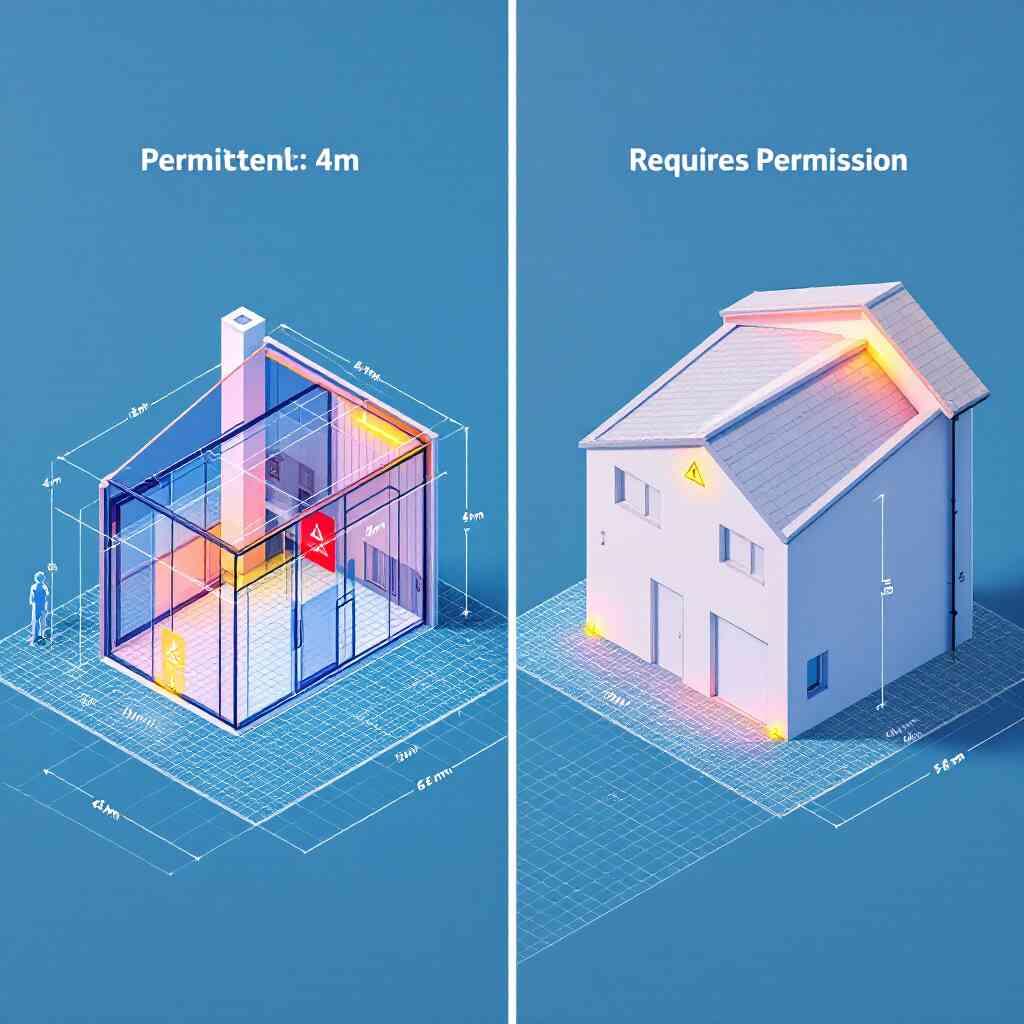
If you’re considering adding a garage, follow these steps to ensure compliance with permitted development rules:
Assess Your Property
- Measure the land surrounding your house to ensure compliance with the 50% land coverage rule.
- Identify the principal elevation of your property.
Design Within Permitted Development
- Stick to a single-storey design with an appropriate roof type (flat, pitched).
- Ensure the garage height and location meet the regulations outlined above.
Check Local Restrictions
Contact your local planning authority (LPA) to verify if there are unique restrictions, such as Article 4 Directions or conservation area rules.
Consult Professionals
Consider hiring an architect, builder, or planning consultant to ensure your design adheres to the rules.
Obtain a Lawful Development Certificate (Optional)
While not mandatory, a Lawful Development Certificate (LDC) provides official confirmation that your garage complies with permitted development rights. This can be useful if you sell your property in the future.
Frequently Asked Questions
QuestionShort Answer
How close can my garage be to the boundary? Within 2m, max height 2.5m.
Can I build a double garage without planning permission? Yes, if it meets height and land coverage limits.
Do I need building regulations approval? Only if over 15m² or 30m² (attached).
What if I live in a conservation area? Additional restrictions apply; check with LPA.
Common Mistakes and How to Avoid Them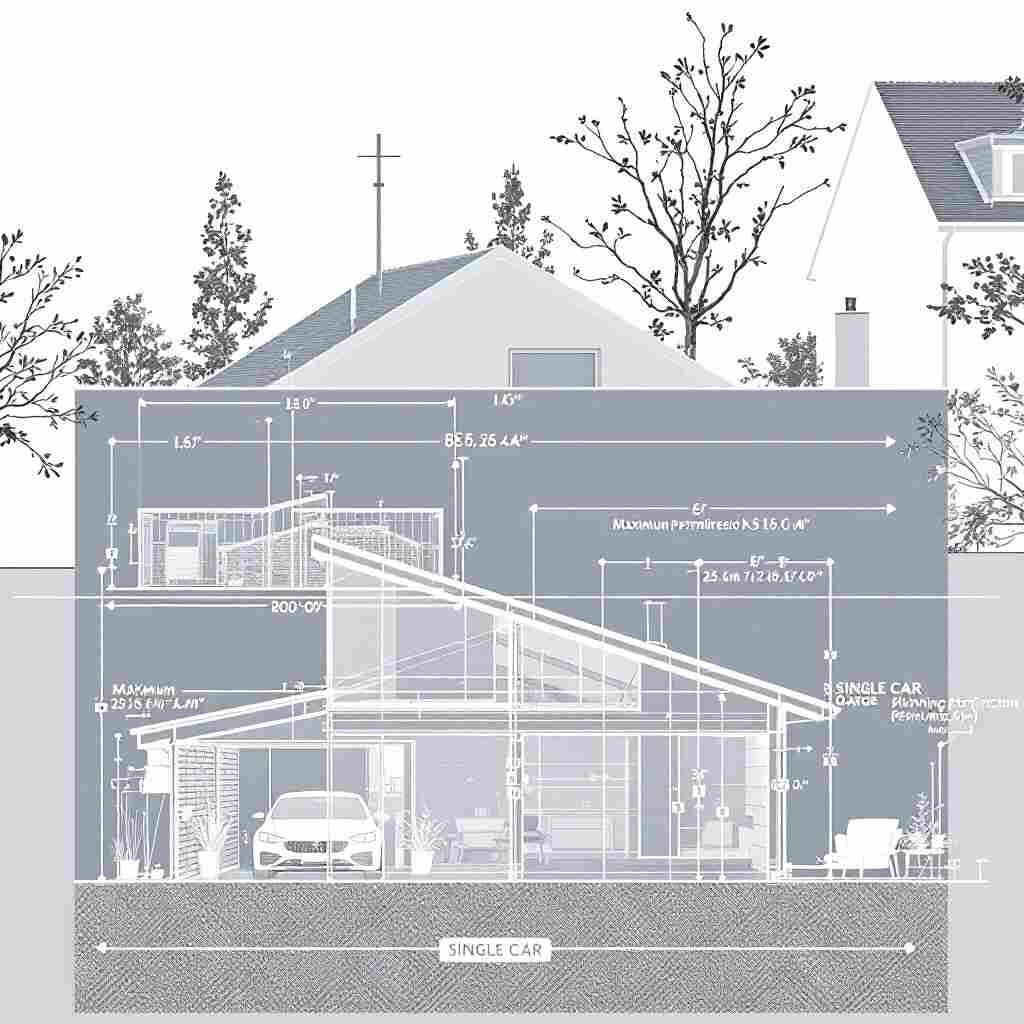
- Exceeding height or land coverage limits: Stick to the permitted dimensions to avoid planning issues.
- Building too close to boundaries: Adjust the design to comply with the 2.5m height limit.
- Overlooking local restrictions: Always check with your local authority, especially in protected areas.
- Confusing planning permission with building regulations: Understand the difference to avoid unnecessary delays.
Real-Life Examples and Case Studies
- Example 1: A homeowner built a single-car garage with a flat roof, staying within the 2.5m height limit near the boundary.
- Example 2: A double garage exceeded 50% land coverage, requiring planning permission.
- Example 3: A property in a conservation area required additional approvals for a side garage.
Tips for Maximizing Garage Space Within Permitted Development
- Use clever storage solutions like wall-mounted shelves or overhead storage racks.
- Choose a dual-pitched roof for additional internal height.
- Opt for a smart layout to maximize parking and storage within a smaller footprint.
The Process If You Need Planning Permission
If your design exceeds permitted development rights, here’s how to proceed:
- Submit a planning application online via the Planning Portal.
- Include detailed architectural plans and property information.
- Wait for approval (typically 8–10 weeks).
- If rejected, consider revising your plans or appealing the decision.
You may also read(after being away my house)

